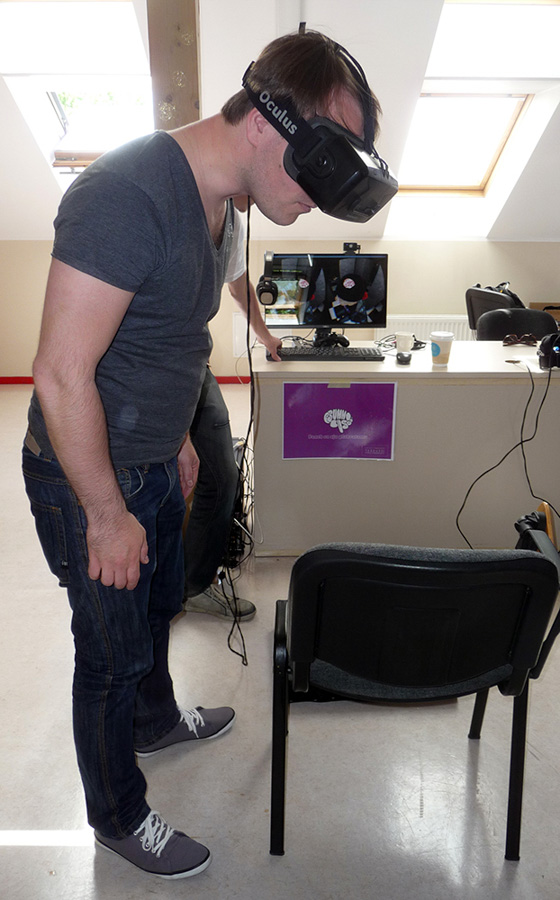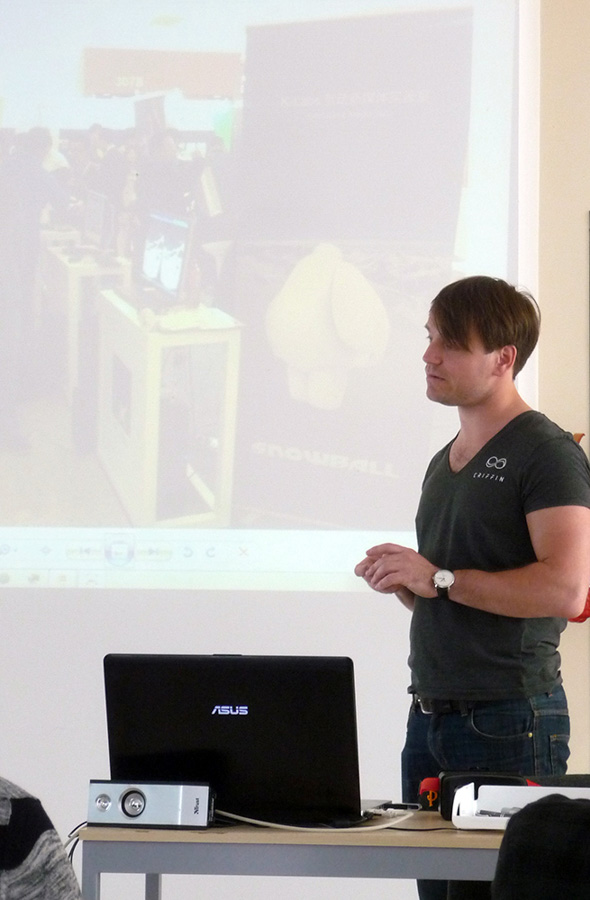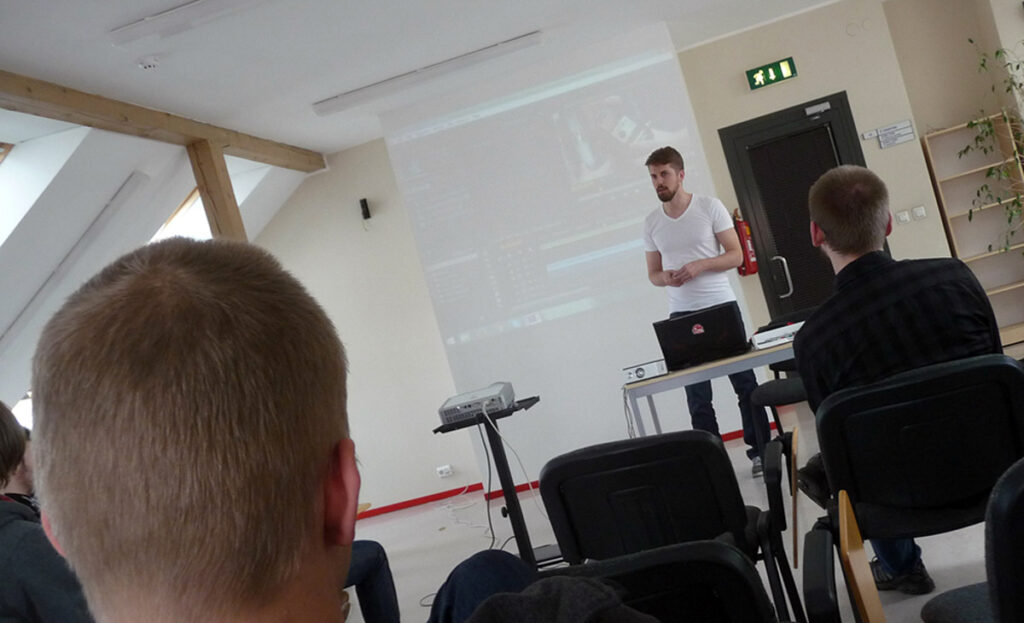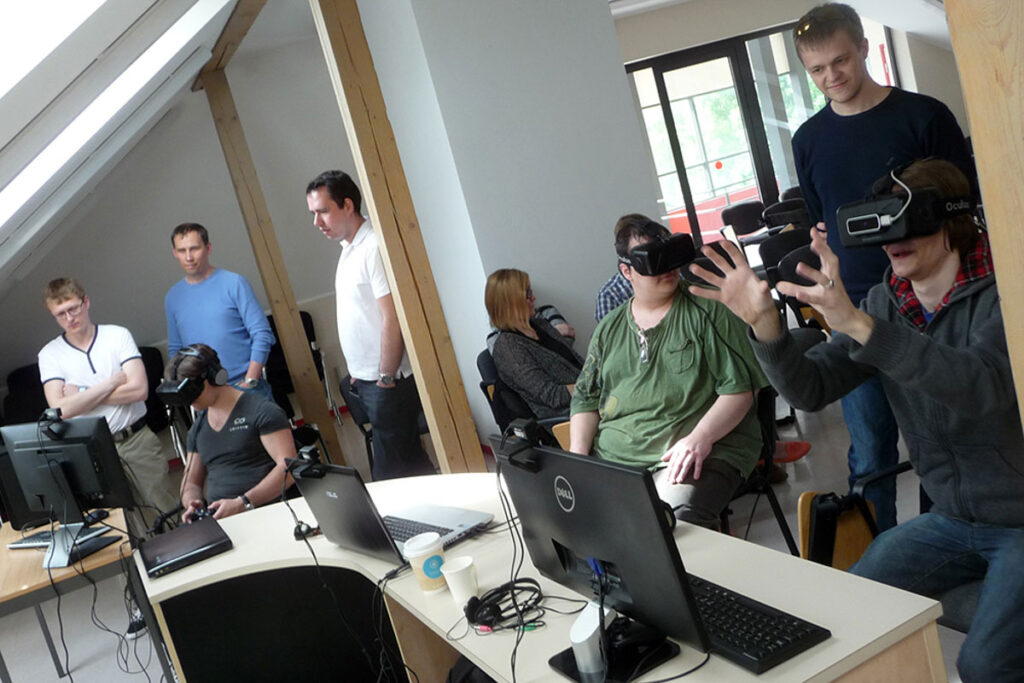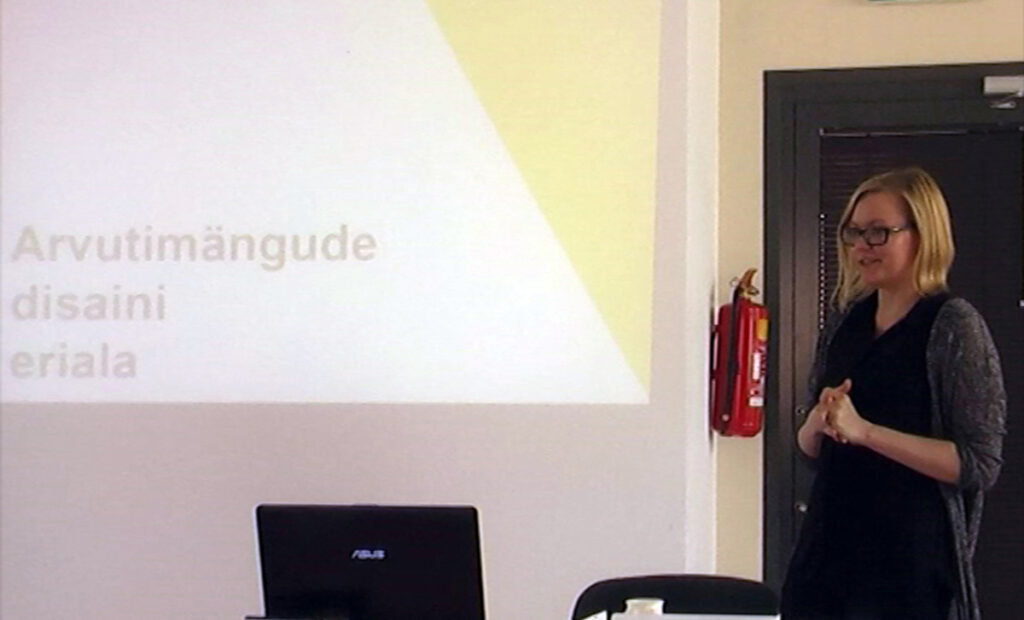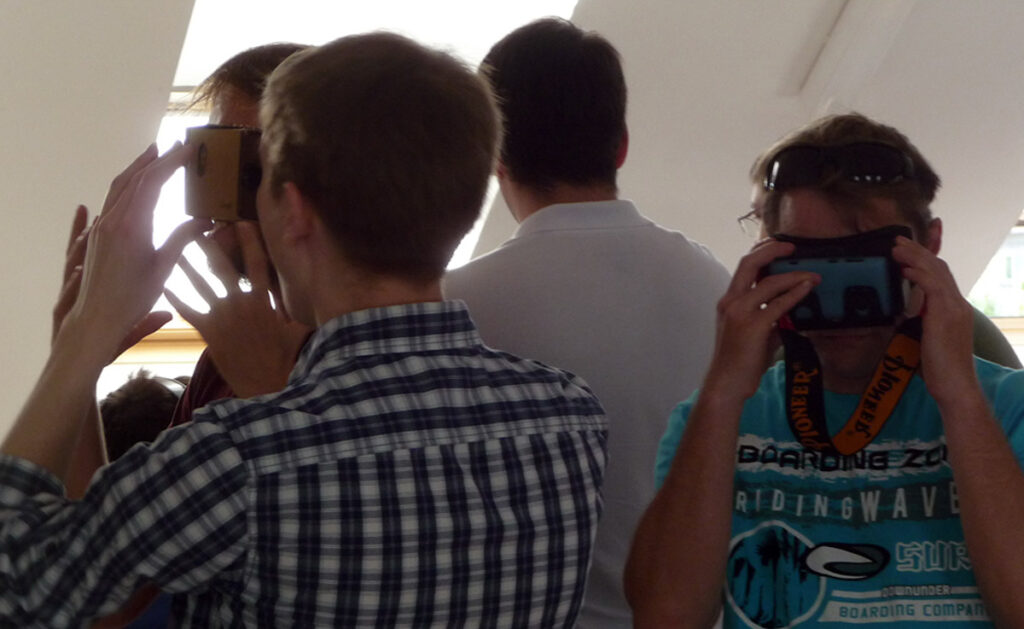The 4th edition of EEVR brought together some 30 VR enthusiasts from all over Estonia to discuss the latest news, share experiences and spread VR know-how. This time the menu was extra-packed with four different presentations and two demo sessions!
First up was Kristi Ramot from Mainor, introducing the all-new game designer course starting this spring. The basic outline of the study program was given and many interesting questions and new ideas were raised. The overall goal of the new program is to train people who would be capable of leading a game project from beginning to end. This entails some knowledge from programming, design in general, business etc.
Next up was Criffin‘s Peeter Nieler, sharing some insights from a recent trip to Unite 2015 in China. The conference had a dedicated VR day, where Peeter also took the stage. After trying many different tech demos, the general conclusions were as follows: China is flooded with Oculus knock-offs and haptic chairs. On the one hand there is no real innovation, but on the other hand everyone is doing their own thing, so it definitely an interesting scene up there. And the ergonomics of chinese headsets is terrible for westerners (-: (emphasis on the nose).
After Peeter we heard a talk from Siim Raidma on VR game design and porting. He has been hard at work developing his still unnamed “hamsterball-death-ray-battle” game and porting some other beautiful (and terribly un-optimized) experiences to VR. He shared some key point for avoiding cyber sickness – avoid any g forces! His own project is a perfect example how this can be achieved with smooth floors, no walls and gentle turns. Yet the gameplay stay engaging. The bigger idea behind the battle game is of a VR e-turnament. Stay tuned!
The last presentation was about VR video by Rein Zobel. He attended a “quick and dirty VR video” workshop in neighboring Finland and brought back some interesting insights about 360 video capture. His project was about making a 360 film with just a single DSLR camera (Canon C-300 in his case). Sounds impossible? Rein and his team solved the problem by first capturing the whole panoramic scene as a still frame. Then they captured all the moving portions one by one with the same camera, always following the action. The last step was to merge the two into a semi-seamless whole. It worked amazingly well! This technique will obviously not work in every situation, but as a low-cost entry point to VR video it sounds perfect. The most expensive bit was the software used to make the panorama in the current project. Check out the end result here.
During all the talks it seemed that the VR lingo is expanding at a mind-boggling pace. Here’s a quick test to see how hard-core VR enthusiast you are. Try to find the hidden meaning in the following sentences: “I think this lighthouse thing is awesome. Have you seen the magic leap motion slam? I don’t believe in tango.” Check your answers from our dictionary 🙂
The demo sessions featured some local software (curtesy of Psychobus), triple-A titles (on behalf of Mario) and also interesting mobile headsets straigh from China (thanks to Criffin).
